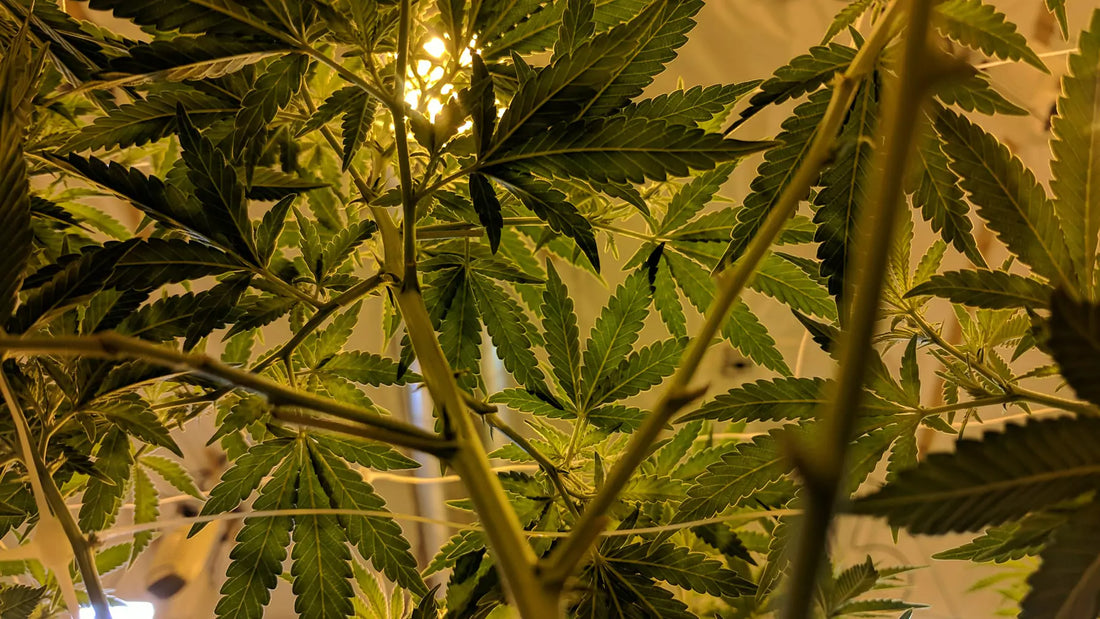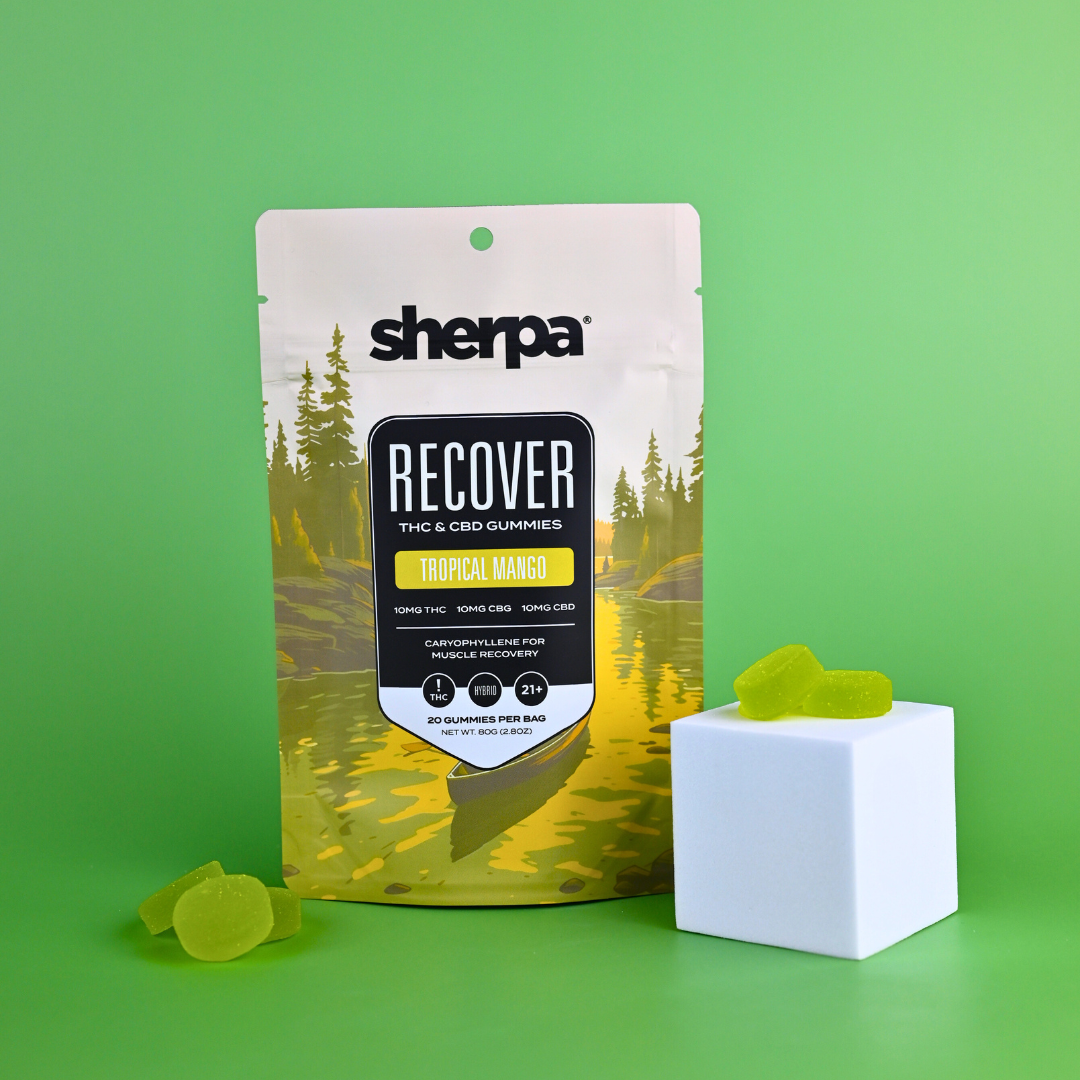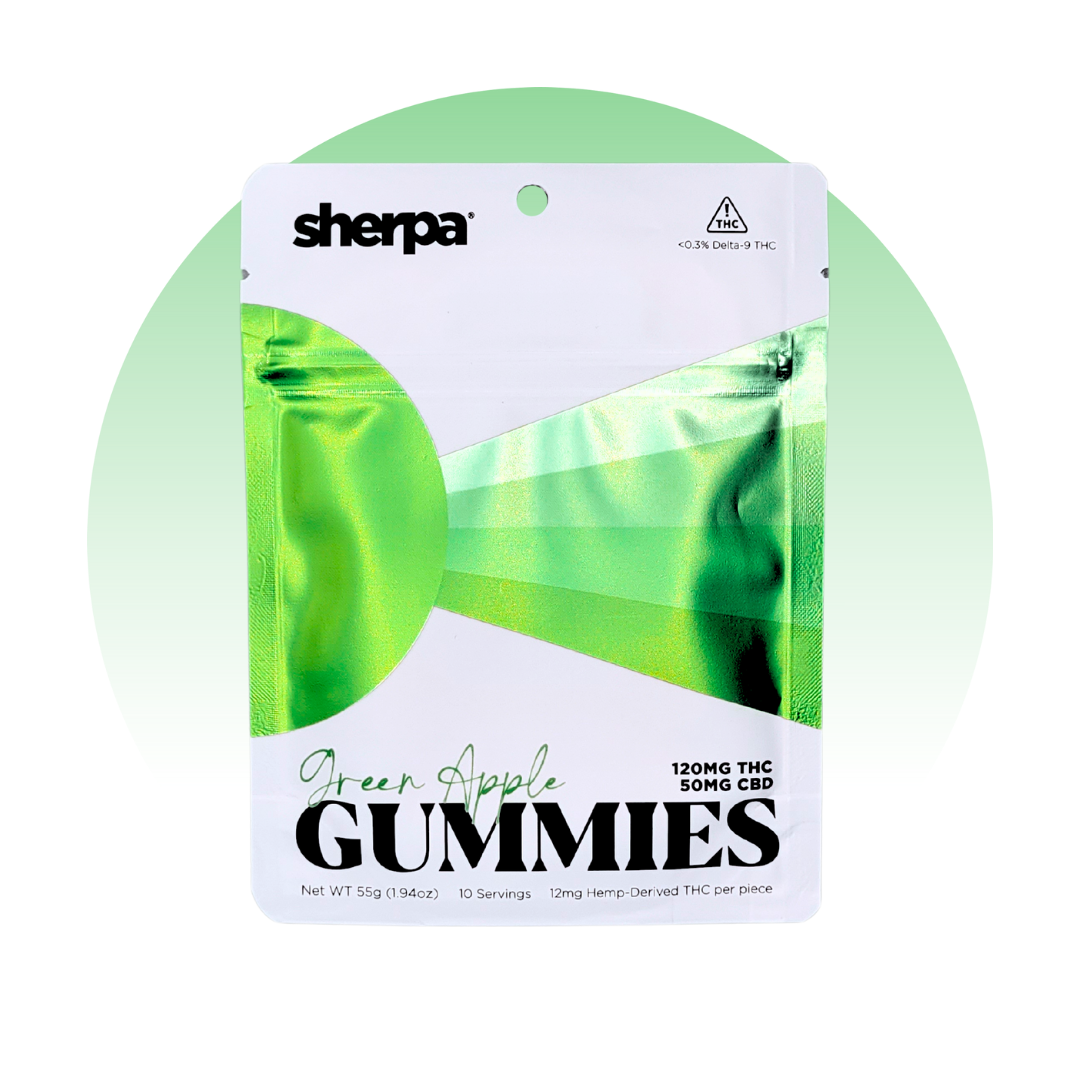
Our Blog
Types of Cannabinoids and Their Effects
Types of Cannabinoids and Their Effects
So we're all aware that consuming cannabis can lead to some pretty profound experiences — both physically and mentally. Yes, it will get you "high," but there are a myriad of other benefits that this plant provides humanity.
In order to understand all of these benefits, we have to understand a powerful class of compounds. They're called cannabinoids, and they have a much bigger impact on your life than you probably know.
But what are cannabinoids exactly? Where are they found? What do they do? Don't worry; we've got all of those answers and more below. So strap in — you're about to learn everything you need to know about these clever chemicals.
What Are Cannabinoids?
Cannabinoids are a diverse group of chemical compounds that interact with the body's endocannabinoid system. Called the ECS for short, this system plays a crucial role in regulating various physiological processes, including mood, appetite, pain sensation, and immune response. Cannabinoids can be naturally occurring or lab-made, but generally speaking, they fall into three categories:
Phytocannabinoids
These are the naturally occurring cannabinoids found in the Cannabis plant. The most well-known phytocannabinoids are tetrahydrocannabinol (THC) and cannabidiol (CBD). THC is primarily responsible for the psychoactive effects associated with cannabis, while CBD is known for its potential therapeutic benefits without causing a "high." We'll have more on both of these cannabinoids later.
Endocannabinoids
These are cannabinoids produced naturally in the human body. The two most studied endocannabinoids are anandamide and 2-arachidonoylglycerol, also called 2-AG. They help modulate a variety of bodily functions by binding to cannabinoid receptors in the ECS. Structurally speaking, these are similar to phytocannabinoids, which is why the cannabinoids from the cannabis plant can alter our bodies' processes.
Synthetic Cannabinoids
These are man-made compounds designed to mimic the effects of natural cannabinoids. They are often used in research or medical applications, but some synthetic cannabinoids have been associated with significant health risks and are sometimes found in illegal drugs. If you've ever heard of K2 or Spice, those are synthetic cannabinoids.
Regardless of their type, cannabinoids exert their effects by binding to specific receptors in the endocannabinoid system, primarily CB1 and CB2 receptors. CB1 receptors are primarily located in the brain and central nervous system, influencing mood, memory, and motor control. CB2 receptors are found in the immune system and peripheral tissues, playing a role in inflammation and immune response.
When cannabinoids bind to these receptors, they can produce a wide range of effects, including pain relief, reduced inflammation, and altered perception of time and space. This interaction is what makes cannabinoids of interest in both medical research and therapeutic applications.
Now that we have cannabinoids down let's turn our attention to the ECS. Understanding that system will give you a little perspective on how these compounds affect the body.
What Is the Endocannabinoid System and What Does it Do?
So we've all heard about the nervous system, the digestive system, and the reproductive system. So what the heck is the endocannabinoid system, and why are you just now hearing about it? Well, because it's one of the least understood systems in the human body.
What scientists do know is that the ECS is a complex cell-signaling system that plays a vital role in maintaining homeostasis — or balance — in your body. Discovered in the 1990s, the ECS consists of three main components: endocannabinoids, cannabinoid receptors, and metabolic enzymes. Let's take a look at those a little more in-depth.
Endocannabinoids
These are naturally occurring lipid-based molecules produced by the body. Like we said above, the two most prominent endocannabinoids are anandamide (AEA) and 2-arachidonoylglycerol (2-AG). Endocannabinoids are synthesized on demand and are involved in signaling pathways that help modulate various bodily functions.
Cannabinoid Receptors
The ECS features two primary types of receptors. CB1 receptors are mainly found in the brain and central nervous system, influencing processes such as mood, memory, and motor control. CB2 receptors are primarily located in the immune system and peripheral tissues, playing a key role in regulating inflammation and immune responses.
Metabolic Enzymes
These enzymes are responsible for breaking down endocannabinoids after they have fulfilled their function. The two main enzymes are fatty acid amide hydrolase, or FAAH, which degrades anandamide, and monoacylglycerol lipase, or MAGL, which breaks down 2-AG. This regulation ensures that endocannabinoids are active only when needed, maintaining balance in the body.
While it's not completely understood, it is clear that the ECS is involved in a wide variety of physiological functions:
- Pain regulation. The ECS can modulate pain perception, providing a natural means of pain relief.
- Mood and emotional regulation. The ECS plays a role in mood stabilization, with research suggesting its involvement in conditions like anxiety and depression.
- Appetite and metabolism. Endocannabinoids help regulate hunger and energy balance, influencing eating behaviors and metabolism.
- Immune response. The ECS contributes to the regulation of immune functions, affecting inflammation and overall immune health.
- Sleep regulation. The ECS is also involved in sleep cycles, helping to promote restful sleep and regulate wakefulness.
The endocannabinoid system is a crucial part of the body's regulatory network, influencing a wide range of physiological functions, and understanding the ECS and its mechanisms provides insight into how cannabinoids — both plant-based and body-based — can impact health and wellness.
Now that we have a good grasp of what cannabinoids are and the system that they interact with, let's take a minute to understand some of the most well known cannabinoids as well as some important ones you might not be aware of.
Understanding THC
Tetrahydrocannabinol, most commonly known as THC, is the primary psychoactive compound found in the cannabis plant — it's responsible for the "high" that users experience when they consume it. However, understanding THC involves exploring its chemical structure, how it interacts with the body, and its effects on the brain and other systems.
THC is a cannabinoid with a unique chemical structure that allows it to bind effectively to cannabinoid receptors in the body. Its molecular formula is C21H30O2, and it is classified as a phytocannabinoid due to its natural occurrence in cannabis. THC is lipophilic, meaning it dissolves well in fats, which influences how it is absorbed and metabolized in the body.
THC primarily exerts its effects by binding to cannabinoid receptors in the ECS, specifically the CB1 receptors located in the brain and central nervous system. When THC attaches to these receptors, it activates them, leading to various physiological and psychological effects. This binding affects neurotransmitter release, altering communication between neurons. This can lead to changes in mood, perception, and memory. It can also influence pain perception, appetite, and coordination.
THC also stimulates the release of dopamine, a neurotransmitter associated with pleasure and reward. This is a key factor in the euphoric feeling often experienced after cannabis consumption. That said, the effects of THC can vary significantly based on dosage, method of consumption, and individual differences, including tolerance and sensitivity. Some common effects include:
- Euphoria. Many users report feelings of happiness and relaxation.
- Altered perception. THC can distort sensory perceptions, affecting how time, sound, and color are experienced.
- Increased appetite. Often referred to as the "munchies," THC can stimulate hunger, leading to increased food intake.
- Impaired memory and coordination. Short-term memory and motor skills can be affected, making activities such as driving dangerous.
Despite these psychoactive properties — or maybe because of them — THC has been recognized for its potentially therapeutic benefits. Medical applications include pain relief, reduction of nausea and vomiting (particularly with chemotherapy patients), and as an appetite stimulant. This can be helpful for folks combating the side effects of strong medications or people recovering from disordered eating.
There are mental benefits of using THC as well. These include the reduction of anxiety levels and the alleviation of depression. By helping you remain present and consider situations in novel ways, THC helps a lot of users break out of old cycles of behavior and take a new look at life.
THC isn't the only cannabinoid that's in the spotlight though. Cannabidiol is also gaining a lot of attention for its therapeutic applications.
A Closer Look at CBD
Cannabidiol, which most people call CBD, is a non-psychoactive compound found in the cannabis plant. Unlike THC, CBD does not produce a "high." Instead, it has gained attention for its potential therapeutic properties and has become increasingly popular in health and wellness products.
Like THC, CBD is classified as a phytocannabinoid with the molecular formula C21H30O2. Its structure also allows it to interact with the ECS, although it does so differently than THC. CBD is lipophilic, enabling it to be easily absorbed by the body when consumed in various forms, such as oils, capsules, edibles, and topical applications.
It interacts with the ECS by influencing the activity of cannabinoid receptors, primarily the CB1s and CB2s. Unlike THC, CBD does not bind directly to these receptors. Instead, it has a more complex mechanism of action. It's thought that CBD may enhance the signaling of the ECS by influencing the availability and effectiveness of endocannabinoids, such as anandamide. This can help regulate various bodily functions without producing psychoactive effects. CBD also interacts with other receptor systems in the body, including serotonin receptors, which are involved in mood regulation, and TRPV1 receptors, which play a role in pain perception and inflammation.
Like THC, the effects of CBD are diverse and can vary depending on dosage, individual physiology, and the method of consumption. There is also quite a bit of overlap, but CBD is most well-known for its physical and mental benefits. It's garnered significant interest for its potential therapeutic applications. Some of the most studied uses include:
- Epilepsy. CBD has been shown to be effective in reducing the frequency of seizures in certain epilepsy syndromes, leading to the development of FDA-approved medications.
- Anxiety and Depression. Research suggests that CBD may be beneficial for managing symptoms of anxiety and depression, offering a potential alternative to conventional treatments.
- Pain Management. Its anti-inflammatory and analgesic properties make CBD a candidate for managing chronic pain and conditions like arthritis.
Ultimately CBD's non-psychoactive nature distinguishes it from THC, making it an appealing option for people seeking relief from various conditions without the high associated with cannabis.
Understanding the Other Cannabinoids
In addition to THC and CBD, the cannabis plant contains a wide array of other cannabinoids, each with unique properties and potential effects on the body. While research on many of these compounds is still in its early stages, understanding their characteristics can provide insight into the broader therapeutic potential of cannabis.
Cannabigerol (CBG)
Often referred to as the "mother cannabinoid," CBG is a precursor to THC and CBD. It is non-psychoactive and has shown promise in research for its potential anti-inflammatory, analgesic, and antibacterial properties. CBG may also play a role in promoting appetite, making it of interest for conditions that cause reduced hunger.
Cannabinol (CBN)
CBN is a mildly psychoactive cannabinoid that is primarily produced as THC ages and breaks down. It is often studied for its potential sedative effects and is believed to enhance sleep quality. Some research also suggests that CBN may possess antibacterial and anti-inflammatory properties.
Cannabidiolic Acid (CBDA)
CBDA is the acidic precursor to CBD and is found in raw cannabis. While it does not produce psychoactive effects, preliminary studies suggest that CBDA may have anti-inflammatory and anti-nausea properties. Research is ongoing to explore these potential benefits, especially in treating conditions like cancer-related nausea.
Tetrahydrocannabivarin (THCV)
THCV is structurally similar to THC but has different effects. It is known for its potential appetite-suppressing properties, making it of interest for weight management. THCV may also possess neuroprotective properties and could have applications in managing conditions like diabetes and epilepsy.
Cannabichromene (CBC)
CBC is another non-psychoactive cannabinoid that may contribute to the overall therapeutic effects of cannabis. Research suggests that CBC has anti-inflammatory and analgesic properties and may promote neurogenesis and the growth of new brain cells. Its potential to enhance mood and relieve pain is currently under investigation.
So now that you have a pretty good understanding of a handful of prominent cannabinoids, let's take a second to understand how they all work together to create something bigger than the sum of their parts.
The Entourage Effect
The interaction of these phytocannabinoids, along with terpenes and other compounds found in cannabis, contributes to what is known as the "entourage effect." This concept suggests that the combined effects of various cannabinoids and compounds work synergistically to enhance the overall therapeutic potential of the plant. You know how different strains of cannabis have noticeably different effects? This is because of the cannabinoids present in them working together using the entourage effect.
So with all of this in mind, there are also some concerns to discuss — both in terms of safety and legality.
The Safety of Cannabis Use
While cannabis is widely considered to be safe, there are a few health concerns to keep in mind. First, cannabis can affect people's mental health, particularly in young users. Some studies suggest a link between heavy cannabis use and increased risk of anxiety, depression, and other mood disorders. In susceptible individuals, it may also trigger or exacerbate psychotic disorders, such as schizophrenia, especially when used frequently or at a young age.
Cannabis can also impair short-term memory, attention, and decision-making abilities. These "spacy" cognitive effects can be particularly concerning for adolescents whose brains are still developing. Users may struggle with learning, academic performance, and daily tasks while under the influence. This is why we're so adamant about cannabis use being limited to individuals 21 years of age or older.
There's also a risk of respiratory issues from smoking cannabis, just like smoking tobacco. Regular cannabis smoking is associated with chronic bronchitis and other lung issues. Its use can increase your heart rate, which may pose risks for individuals with pre-existing heart conditions.
Finally, you need to make sure that your cannabis products are of high quality, and that quality can be verified by third-party testing. At Sherpa, we take this very seriously. All of our products are tested in-house and in an independent lab to ensure that our dosages are accurate, and no harmful compounds like heavy metals or pesticides are detected. Keep in mind, this is not a requirement in this industry, so not everyone does it.
Ultimately, the safety of cannabis use largely depends on individual circumstances, and you need to to approach it thoughtfully and responsibly. Consulting with healthcare professionals can provide personalized insights, especially for those with existing health conditions or those taking other medications.
Legal Considerations of Cannabis Use
Up until very recently, cannabis use has been flat-out illegal in the U.S. It was illegal to grow it, possess it, and use it, and studying it was exceedingly difficult due to the regulations around Schedule 1 Substances — that is, those with no therapeutic benefit and a high risk for addiction and abuse.
Now that the patent absurdity of that scheduling is well accepted, the legal landscape surrounding cannabis use has evolved significantly. One of the biggest milestones was the passage of the 2018 Farm Bill. Essentially this piece of legislation defined the terms "cannabis," "hemp," and "marijuana."
Essentially, cannabis is the umbrella term for the plant, and specific crops can be defined as either hemp or marijuana. If it contains less than .03 percent THC by dry weight, it's hemp. If it's more than that, it's marijuana. Hemp is perfectly legal to grow, possess, and consume, while marijuana remains federally prohibited.
This marked a pivotal shift in the regulation of cannabis, paving the way for a booming market for hemp-derived products. That said, the legality of cannabis remains pretty complex and varies widely across states. While several states have legalized marijuana for recreational and medicinal use, others maintain strict prohibitions. As a result, people need to navigate a patchwork of state laws and regulations, which can lead to confusion about what is permissible.
To be perfectly clear, all of Sherpa's products are derived from hemp, meaning they are perfectly legal to purchase, possess, and consume in all 50 states. You don't have to worry about getting a knock on your door from a guy in sunglasses and an acronym on his hat.
Final Thoughts on Cannabinoids and What They Mean for You
When you start gaining a better understanding of cannabinoids and the endocannabinoid system, you start to reveal a complex relationship that significantly impacts our health — mental, physical, and spiritual. It's a complex landscape, but one that's beautiful in its own way. While there is still some mystery surrounding the actual mechanisms by which this plant helps us on a physiological level, the results are unquestionable. When it comes to all-natural medicines, cannabis has the most potential for powerful changes in your life.
So with that in mind, here's to your wellbeing. We hope you use our products to elevate your life, whatever that means to you. Whether it's better managing chronic pain, addressing the anxiety that's robbed you of your joy, or just connecting with friends around the campfire after a nice long hike, Sherpa's THC products are exactly what you've been searching for.





